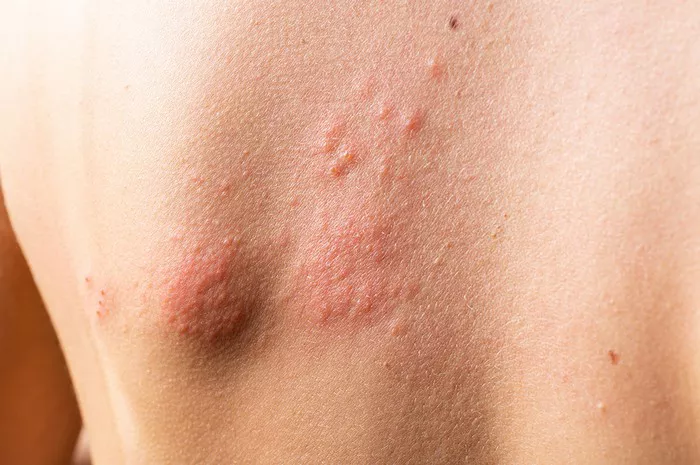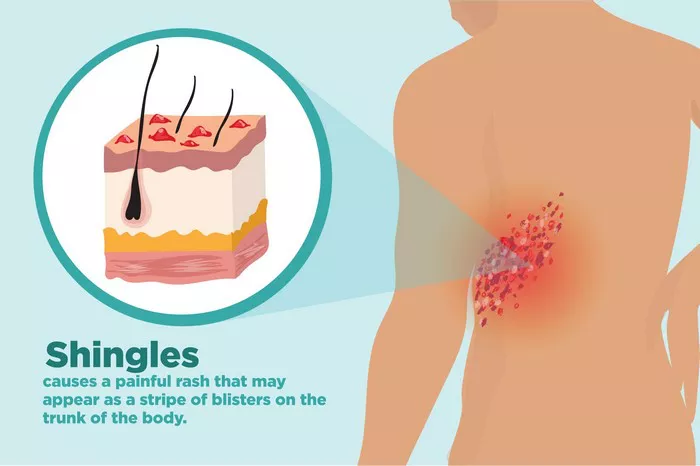Shingles, also known as herpes zoster, is a viral infection caused by the varicella-zoster virus, the same virus responsible for chickenpox. It manifests as a painful rash, typically appearing as a single stripe of blisters that wraps around one side of the torso, although it can occur anywhere on the body. This condition can be excruciating, often accompanied by itching, burning, and tingling sensations. Finding relief from the symptoms of shingles is crucial for patients’ comfort and well-being. While shingles cannot be cured, several treatment options can help alleviate the discomfort associated with the condition. In this article, we explore various strategies for managing shingles symptoms to provide much-needed relief for sufferers.
Understanding Shingles Symptoms
Before delving into treatment options, it’s essential to understand the symptoms of shingles. The primary symptom is a painful rash that develops on one side of the body. This rash typically forms a single stripe of blisters along a nerve pathway. Other common symptoms include:
1. Pain, ranging from mild to severe, which may be continuous or intermittent.
2. Itching, tingling, or burning sensations in the affected area before the rash appears.
3. Sensitivity to touch.
4. Fever and headache in some cases.
5. Fatigue and general feelings of malaise.
The severity and duration of shingles symptoms can vary from person to person. While the rash usually clears up within 2 to 4 weeks, some individuals may experience persistent pain or complications such as postherpetic neuralgia (PHN), which causes long-term nerve pain.
Treatment Options for Shingles Relief
1. Antiviral Medications: Antiviral drugs are often prescribed to reduce the severity and duration of shingles symptoms. These medications, such as acyclovir, valacyclovir, and famciclovir, work by inhibiting the replication of the varicella-zoster virus. Early initiation of antiviral therapy is crucial for maximum effectiveness, ideally within 72 hours of the rash’s onset.
2. Pain Management: Managing pain is a key aspect of shingles treatment. Over-the-counter pain relievers such as ibuprofen, acetaminophen, or naproxen can help alleviate discomfort. In more severe cases, prescription pain medications or topical treatments containing lidocaine may be recommended to numb the affected area.
3. Calamine Lotion or Oatmeal Baths: Calamine lotion can provide relief from itching and soothe irritated skin. Applying calamine lotion directly to the rash several times a day can help dry out the blisters and reduce itching. Alternatively, taking oatmeal baths can also ease itching and promote healing. Adding colloidal oatmeal to lukewarm bathwater and soaking for 15 to 20 minutes can provide relief.
4. Cool Compresses: Applying cool, damp compresses to the affected area can help alleviate pain and reduce inflammation. Be sure to use a clean cloth and avoid applying ice directly to the skin to prevent further irritation.
5. Capsaicin Cream: Capsaicin, the active component in chili peppers, has been shown to alleviate nerve pain when applied topically. Capsaicin cream can be applied to the affected area several times a day, but it may cause a burning sensation initially.
6. Antihistamines: Antihistamines such as diphenhydramine can help relieve itching associated with the shingles rash. These medications are available over-the-counter and can be taken orally or applied topically in the form of creams or lotions.
7. Steroid Medications: In some cases, corticosteroids may be prescribed to reduce inflammation and alleviate pain associated with shingles. These medications are typically used in conjunction with antiviral therapy and pain management strategies.
8. Nerve Blocks: For severe pain that does not respond to other treatments, nerve blocks may be recommended. This procedure involves injecting anesthetic medication near the affected nerves to temporarily block pain signals.
9. Gabapentin or Pregabalin: These medications, which are commonly used to treat nerve pain, may be prescribed for individuals experiencing severe or persistent pain due to shingles. They work by stabilizing electrical activity in the brain and nervous system.
10. Physical Therapy: In cases where shingles-related pain persists after the rash has healed, physical therapy may be beneficial. Therapeutic exercises, massage, and other modalities can help improve mobility, strength, and flexibility while reducing pain.
Conclusion
Shingles can be a debilitating condition, causing significant pain and discomfort for those affected. While there is no cure for shingles, prompt treatment can help alleviate symptoms and promote faster recovery. Antiviral medications, pain management strategies, and topical treatments can all play a role in providing relief from shingles symptoms. Additionally, measures such as cool compresses, oatmeal baths, and antihistamines can help soothe itching and irritation associated with the rash. It’s essential for individuals experiencing shingles symptoms to consult with a healthcare professional for proper diagnosis and treatment recommendations tailored to their specific needs. With appropriate care and management, individuals can find relief from the discomfort of shingles and facilitate a smoother recovery process.
























